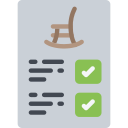Chosen theme: Strategies for Pension Plan Selection. Welcome to your clear, supportive starting point for deciding which pension plan fits your goals, lifestyle, and timeline. Read on, reflect, and share your questions or experiences so we can grow smarter together.
Define Your Retirement Vision First
01
Timeline and Milestones
Sketch the age you want to retire, the transition pace you prefer, and key milestones like paying off a mortgage or funding education. A concrete timeline narrows pension plan choices, clarifies contribution intensity, and helps you prioritize flexibility features you will actually use.
02
Income Needs and Lifestyle
Imagine monthly spending in retirement across essentials, travel, hobbies, and healthcare. Translate those costs into required income streams, blending guaranteed sources with investments. When you quantify your needs, plan selection becomes less about speculation and more about matching features to your real lifestyle.
03
Flexibility and Life Events
Life changes—career shifts, caregiving, or entrepreneurship—can reshape a retirement path overnight. Favor plans that allow adaptable contributions, rollovers, and broad investment menus. Flexibility acts like a shock absorber, preserving momentum when your personal and financial circumstances inevitably evolve.
Match Plan Types to Your Situation
Workplace plans often bring payroll convenience, employer matching, and institutional pricing. Individual plans deliver autonomy, portability, and broader investment selection. Compare governance, fees, and investment quality; then choose the structure that best balances convenience, control, and cost-efficiency for your circumstances.
Match Plan Types to Your Situation
Roth emphasizes tax-free withdrawals later, while Traditional prioritizes tax deductions today. Consider your current tax bracket, expected future rates, and contribution capacity. Younger earners or those anticipating rising incomes often favor Roth, while high earners seeking present-day relief may lean Traditional.

Extract Maximum Value from Workplace Plans
Aim to capture the full employer match as a first, nonnegotiable goal. Matching contributions are effectively risk-free returns on your savings. Automate contributions so you never miss a month, and tell us in the comments how your employer match is structured to compare strategies.



Control Fees and Improve Investment Quality
Compare expense ratios across funds, note plan administration fees, and watch for transaction costs. A few tenths of a percent can materially change long-term outcomes. Favor transparent, low-cost options and ask your HR team for a fee disclosure if details are unclear.
Control Fees and Improve Investment Quality
A strong plan offers broad index funds, sensible active choices, and clear risk categories. Ensure you have exposure to major asset classes and appropriate bond options. If the menu is limited, consider complementary individual accounts for diversification.

Coordinate Taxes Across Decades
Blend pre-tax and Roth sources to create optionality later. Diversified tax buckets help you manage withdrawals, respond to policy changes, and smooth taxable income. This flexibility can preserve benefits and reduce stress when markets or rules shift unexpectedly.
Coordinate Taxes Across Decades
During career breaks or sabbaticals, consider converting pre-tax assets into Roth while your tax rate is temporarily lower. Plan conversions deliberately, watch brackets, and coordinate with other income. Share your conversion questions, and we will highlight scenarios in upcoming guides.
Target-Date Funds: When Simplicity Helps
Target-date funds auto-adjust risk as you approach retirement, making them useful when time or expertise is limited. Evaluate glide paths, underlying fees, and fit with other accounts. Simplicity can be a strength if it keeps you invested through volatility.
Custom Allocation and Rebalancing Discipline
If you prefer control, build a diversified mix and schedule periodic rebalancing. Set thresholds or calendar reminders to reduce emotional decisions. Tell us your rebalancing rule of choice, and we will share community-tested approaches in future posts.
A Practical Decision Framework You Can Reuse
Weighted Scoring Model
List your candidate plans and score them on fees, investment quality, tax alignment, employer benefits, and flexibility. Weight criteria based on your priorities. A clear scoring sheet transforms scattered impressions into a decisive, defensible selection.
Your One-Page Pension Plan Statement
Write a one-page summary describing your chosen plan, contribution targets, investment mix, and review dates. Keep it visible and revisit quarterly. This simple document anchors discipline when news headlines or market swings test your commitment.
A Short Story: Maya’s Confident Choice
Maya was overwhelmed by acronyms until she mapped her goals, compared fees, and targeted her employer match. She chose a low-cost menu with automatic increases and set a yearly review. Six months later, she felt relief—and shared her checklist with friends.
